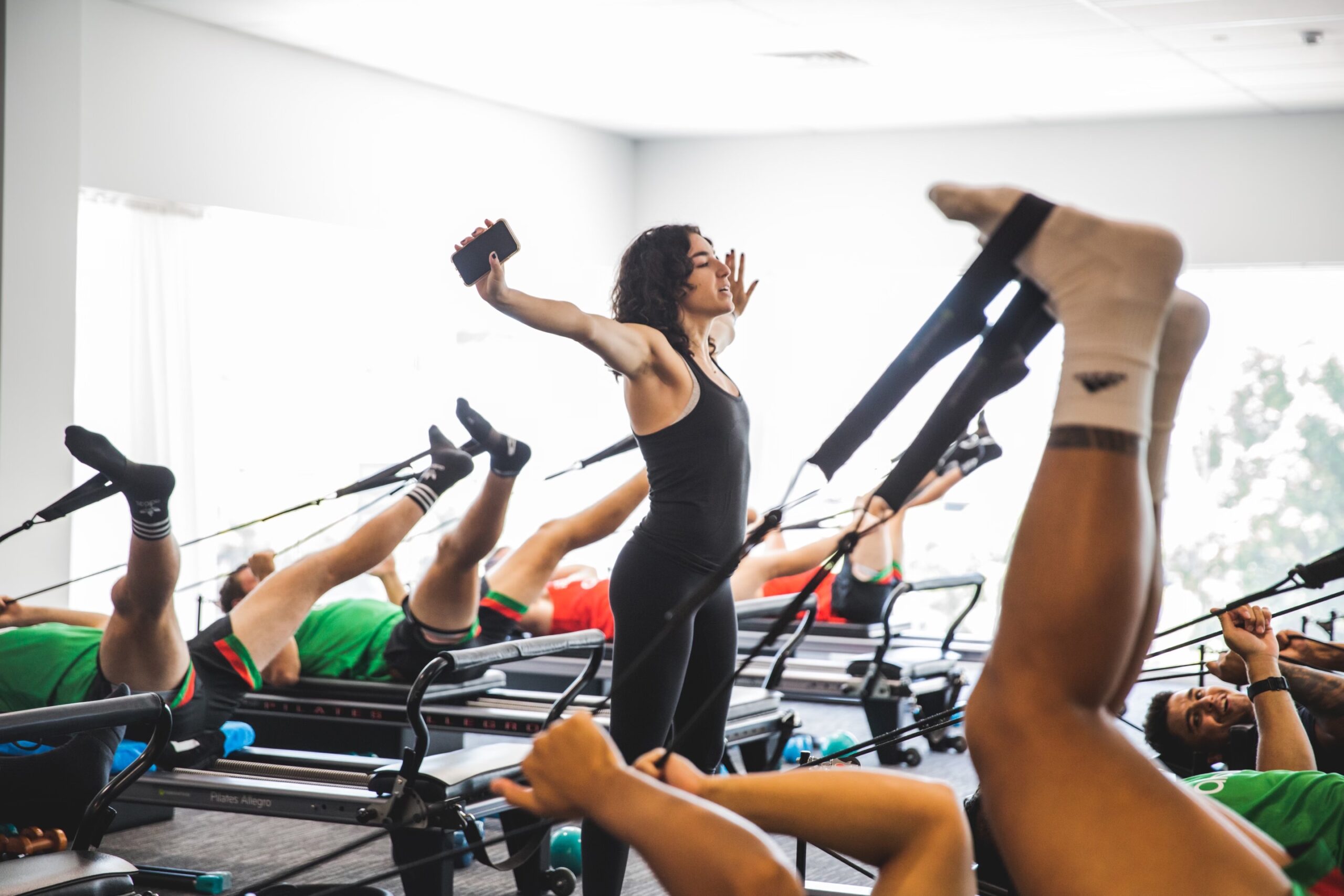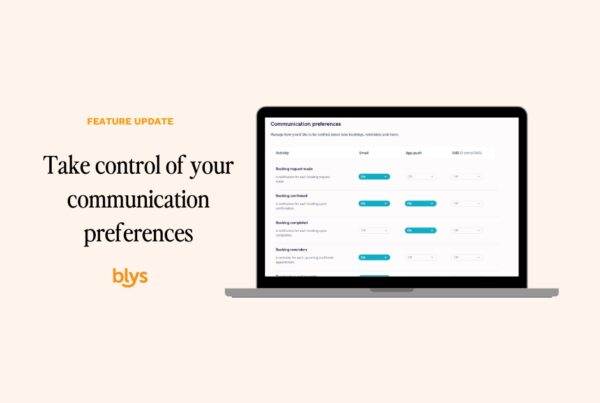
Breaking a sweat is so beneficial for our health, wellbeing and mood. Not only does a workout improve our circulation and support a healthy heart but it can keep our metabolism firing and our muscles fit and strong.
However, an intense workout can lead to things like stiffness, tightness and even the dreaded DOMs (a.k.a. Delayed onset of muscle soreness). That’s why developing a recovery routine is so crucial to helping our body bounce back from a dynamic workout and ensure we turn up to our next workout or class feeling our best,
Not sure where to start when it comes to the best ways to recover after a workout? Whether you’re lifting weights, heading out for a run or hitting your local Pilates studio, we’ve called on the experts to share their top tips for recovering after a workout.
We sat down with KX Pilates Trainer and Academy Tutor Ariana Mazzeo, who fills us in on the best ways to speed up your recovery time after a tough session.
Why is a post-workout recovery routine important?
Whether you’re pumping iron, smashing out a HIIT session or toning up in a Pilates class, you need to give your body a chance to recover.
Each workout stretches and challenges your muscles, which means they need time to repair ahead of your next workout. While pushing yourself during your class is important, creating a post-workout recovery routine is even more beneficial.
Recovery workouts and rest days help to prevent overtraining, promote muscle recovery and can even help you perform at your best during your next workout.
Ideally, you want to leave between 48 to 72 hours of downtime between intense workouts to allow your muscles to rest and recover.
Why? Well, your body needs to return to homeostasis after metabolic and inflammatory challenges (a.k.a. exercise) to effectively recover. By learning the best recovery technique, you can help to prevent injury and foster a sustainable exercise routine that is easy to maintain for months and years to come.
The best ways to recover from a workout from a KX Pilates trainer
Someone who knows the best ways to recover after a workout is Ariana Mazzeo, a trainer at KX Pilates as well as aquality controller and academy tutor —meaning she gives other KX Pilates instructors the tools they need to deliver top-notch workouts to their clients (so in a nutshell, she knows what she’s talking about!)
Ariana has been a dancer for over 20 years, performing on iconic stages (including the Sydney Opera House). For the past two years, she has been teaching at multiple Sydney pilates studios and managing a team of trainers to ensure they’re delivering the best workouts possible.
Ariana is a big advocate for a recovery routine and shares her top tips for the best ways to recover after a workout.
Recovery tip 1: Stretch it out
“Stretching can help reduce lactic acid throughout the body, leading to tight, sore muscles the few days after your workout. I like to think of it as a wind-down after a session. A chance to give your body (and mind) time to decompress and return to its normal state before you start your day.
Not sure what to stretch? If you focused on that muscle or body part in your session, it deserves a bit of love.
My all-time favourite stretch is a figure 4 stretch – sit on a chair or your reformer bed facing the side, pop one ankle on top of the opposite knee (like a figure 4 position) and let your body fold forward over your legs. You’ll thank me later!”
Recovery tip 2: Hydrate
“After a big, juicy reformer workout, no doubt you will be sweating! In order to improve recovery, it is important to hydrate after your session and throughout the day.
Our bodies need hydration to replace the fluids lost when we sweat in order to maintain normal body and brain function and performance levels.
Keep your water bottle close by during your workout, afterwards, and throughout the day to maintain hydration and improve recovery post-workout!”
Recovery tip 3: Fuel up
“There is nothing better to give you energy after a workout than some yummy, nutritious food. Use this as a time to refuel your body, giving it the energy it needs to recover from your workout and sustain and replenish your energy levels throughout the rest of your day.
Loading up on carbohydrates and proteins is a great way to replenish your energy sources and recover your muscles. If you are working out in the morning, try having yogurt and some fruit or a yummy smoothie after your workout. If you are more of an ‘after work’ Pilates go-er, opt for protein (meat, chicken, fish or legumes) with lots of leafy greens.”
Recovery tip 4: Active recovery
“A great way to promote recovery is through performing a low-intensity exercise following your high-intensity workout, known as active recovery. This could be going for a walk, doing a yoga class, stretching or even swimming.
It is often considered more beneficial than resting completely, as it gives the muscles a chance to move the lactic acid around the body and flush out any unwanted toxins produced from the muscles during exercise. With this movement, fresh blood can bring nutrients that help repair and rebuild the muscles broken down in your workout.
Science aside, it’s a great way to stay active and moving while recovering from a kick-ass workout!”
Recovery tip 5: Prioritise rest
“Sleep is the most important recovery tool known to science. No other recovery tips and tricks will make the difference if you do not get enough sleep.
During your sleep, the body repairs the damage and allows the muscles to build and rebuild tissue for recovery.
In any form of exercise or training, your sleep and recovery are just as important as physical training because this is where the changes occur! So ensure you get 7-9 hours of Zzz’s to promote optimal recovery!”
Recovery tip 6: Book a massage
Massage is one of the best ways to loosen muscles, de-stress and get rid of those pesky knots.
Treating yourself to a massage post-workout will have more than one benefit than feeling fantastic afterwards. Research has shown that massages, compression, and active recovery help to reduce the severity of DOMs.
Another study shows that massages significantly reduce muscle soreness after a tough workout. So with a range of massage types available, which one will be best for you for post-workout recovery?
- Sports massage: A sports massage uses specific techniques to improve circulation, remove toxins and improve training capacity. A sports massage helps athletes to increase flexibility, along with increasing the supply of oxygen to the muscles.
- Deep tissue massage: A deep tissue massage has been shown through research to improve lactate clearance, prevent injuries and aid in injury treatment. A deep tissue massage gets deeper into the muscles to relieve built-up toxins.
- Lymphatic drainage massage: One of the lesser-known massages, lymphatic drainage works to remove waste from your lymphatic system. A network of tubes underneath the skin that help circulation and remove metabolic waste. This massage can increase your range of motion by healing scar tissue.
Wrap up: The best things for recovery after a workout
There’s no better feeling than being on top of your game, limber, and ready for your next session. So to improve your performance, prevent injury and get you feeling your best while exercising, you need to prioritise recovery after your workout sessions.
With Blys, you can access qualified and vetted massage therapists who come to you. You read that correctly: you no longer need to find a local massage shop or spa, wait weeks for an appointment or sit around in crowded waiting rooms.
Instead, your professional massage therapist fits within your schedule, and you can enjoy your massage from the comfort of your own home.
What are you waiting for?
Speed up your post-workout recovery with an in-home massage from Blys.



